The M14-based M1A is a big, brawny rifle — and we like it that way. Chambered in 7.62 NATO/.308 Win., it harkens back to an era of wood and steel and exudes classic quality. But there often is a need for a rifle to be smaller and handier, and it’s hard to overlook the benefits of employing modern materials. That’s how we ended up with variants of the design like the M1A SOCOM 16 CQB, an exceedingly compact yet capable 16.25″-barreled version of the M1A.
But what if you wanted to take the downsizing of the M1A up a notch, so to speak? You inevitably arrive at a folding assembly system of some sort, which brings us to the subject matter at hand.
Enter the Delta
What we are discussing here today is a brand new variant of the Delta 14 Chassis Gen 2, a product I recently had the pleasure of trying out on a SOCOM 16 CQB. The Delta 14 is a drop-in chassis system designed for M1A-pattern rifles and constructed of rugged, yet lightweight glass-filled polymer.
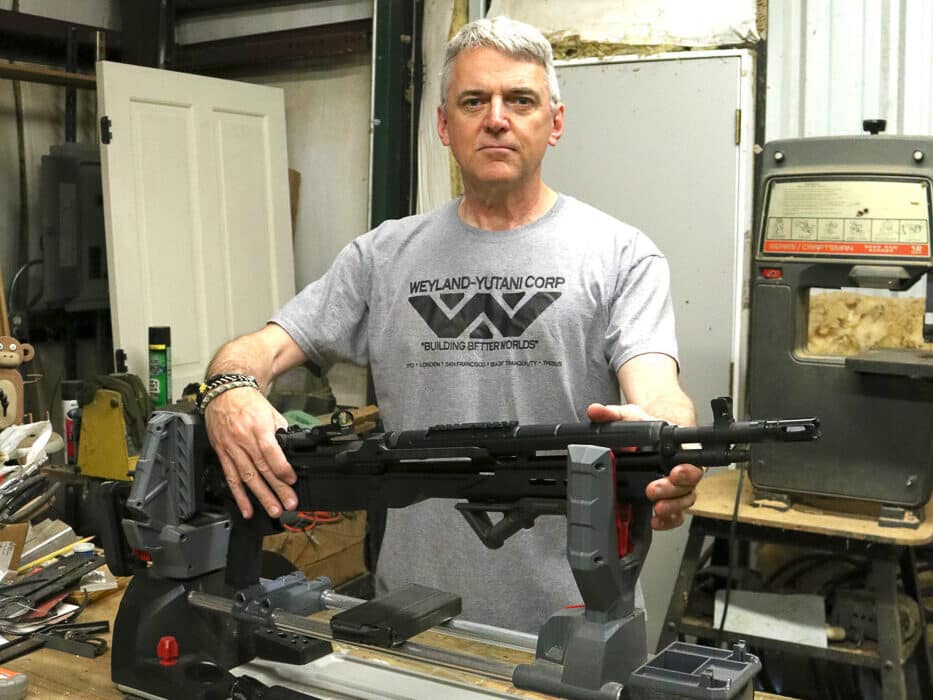
Note that I’m calling this a chassis rather than a stock. There’s a reason for this. At its core, the Gen 2 chassis, priced at $199.99, is a foundation for building out your M1A’s chassis system to fit a wide range of uses. Also, fitting your rifle into it is a simple drop-in affair. Pull your trigger group from your rifle, replace your factory parts with the chassis, reinstall your trigger group (fair warning — it’s a tight fit), and you’re ready to go.
The Delta 14 Chassis Gen 2 transforms the already-superlative M1A into something even more lightweight, compact, and portable.
Origin Story
Bill Bovensiep is the human dynamo behind Delta 14. An electrical engineer by training, Bill was born a gun nerd. His Dad was a soldier and raised him around firearms, and Bill’s professional background involves petrochemicals and making stuff for the automotive industry.
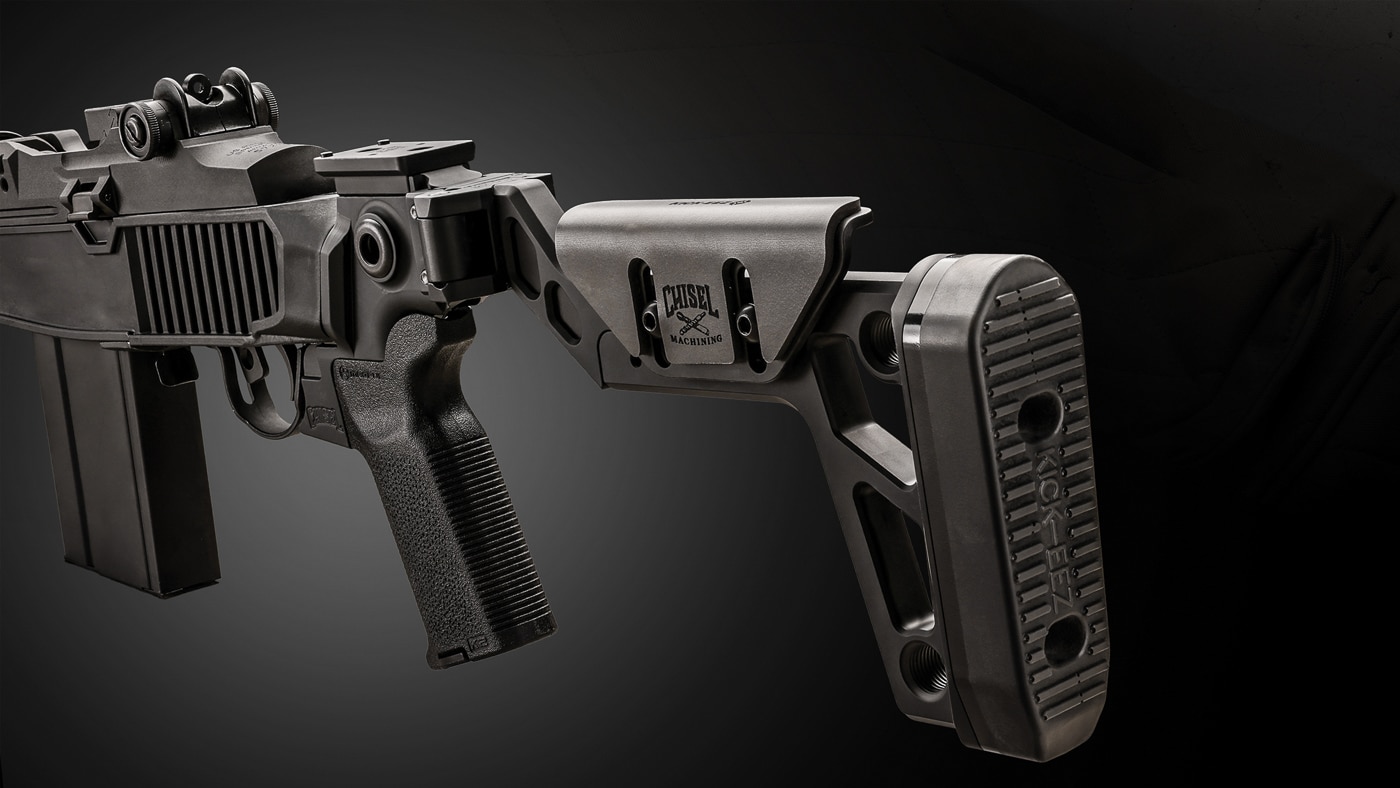
Back in 2016, Bill bought himself a Springfield Armory SOCOM rifle. As he seemed unable to source exactly the furniture he wanted from the commercial market, Bill decided to craft his own. After a lot of trial and error, he produced the first Delta 14 Chassis.
Bill bodged together the original prototype in his garage. He tried making a version out of aluminum, but that proved to be both expensive and heavy. Drawing upon his experience with automotive parts, Bill eventually crafted that first prototype out of industrial foam and two-part epoxy — the same stuff car companies use to make bumpers. He made 20 copies of that first design, christened it the Gen 1, and then beat the bejeebers out of it. That eventually led to the definitive Gen 2, released in 2018.
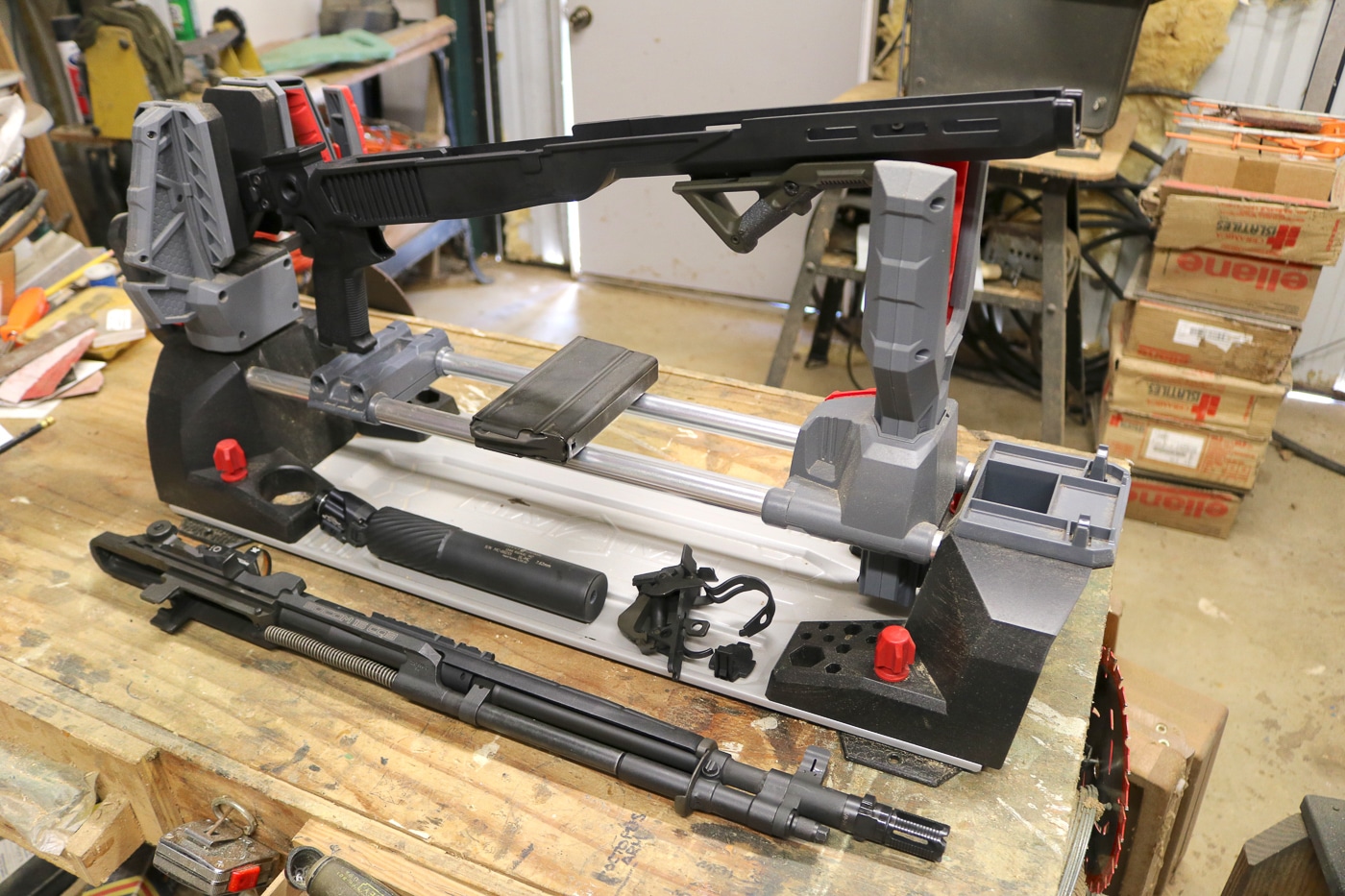
The Gen 1 weighed 1.25 lbs. and served as a learning experience. The Gen 2 weighs a paltry 0.75 lbs. and, in my opinion, reflects the current state of the art.
The Details
The real magic for this chassis system can be found at the near end. The basic chassis includes a Mossberg-standard mount on the tail that will accept any stock compatible with the ubiquitous Mossberg 500/590 shotgun. That means everything from raw pistol grips to rugged side folders of a variety of flavors are drop-in and ready to go. A simple 5/16×18 fastener is all that is required to swap this stuff out.
Delta 14 offers a variety of exotic options on their website straight from the factory. You can even use this system to fit your M1A with an AR-style slider. My test gun came with a simply fantastic aluminum billet-cut side folder from Chisel Machining. Whether your proclivities lean toward a tactical folder or a nice ergonomic Monte Carlo, Delta 14 has you covered.
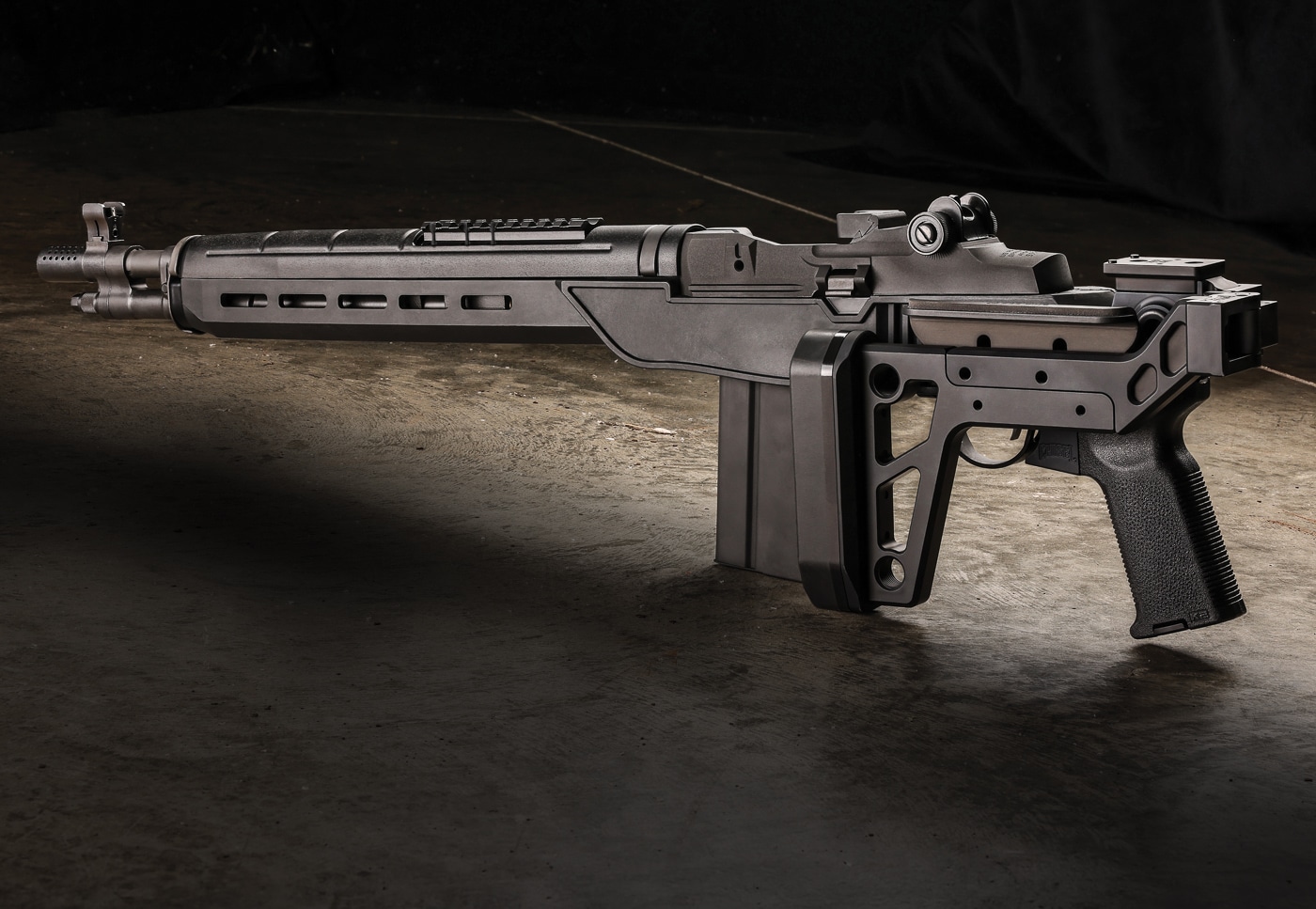
While the rear portion of the Delta 14 Chassis Gen 2 is an important part of the design, the chassis system itself has many notable features. There’s ample M-Lok real estate up front for accessories, and the large magwell is flared for quick magazine changes.
To ensure maximum durability despite the chassis’ light weight, the front ferrule is formed from steel, and there is a universal steel T-nut mount in the back. If you can field strip your rifle, you can install this system. Just pop out the trigger assembly, remove the action, drop it into place in the Delta 14 Chassis Gen 2, and replace the fire controls. The fit is intentionally tight, but you’ll figure it out.
The selection of glass-filled nylon for the chassis was well-reasoned. In addition to exceptional ruggedness at an insanely low weight, this material is also paintable should you harbor an affection for drab-colored Krylon. Additionally, unlike heavier aluminum options, this stuff doesn’t really transmit heat. As a result, the assembly doesn’t heat up quickly under rapid-fire conditions.
The geometric design of an accessory like this is certainly important. Ergonomics is the science of interfacing mechanical objects with the human form, and this chassis is optimized in that regard. However, for a nifty all-weather trinket like this, what you make it out of really determines its ruggedness and practical serviceability.
A Brief Science Interlude…
There is a broad gulf between the flimsy disposable plastic used in junk toys and the rugged stuff Bill uses to craft his rifle chassis. He starts with DuPont Zytel, a glass-filled nylon composite material. That engineering term “composite material” simply refers to a material that is comprised of two or more separate components, each selected for their unique properties. Glass-filled nylon is rugged, lightweight and environmentally resistant. It is also fairly easy to mold into complex shapes.
The nylon bit is the binder, the part that takes up most of the space and that defines the geometry of the part. Nylon is a trade name for a specific group of polyamides that are classified as thermoplastic polymers. That means you can heat them up and change their shape. This attribute lends itself to pressure injection molding. Raw nylon is typically white or colorless. When drawn into filaments, it resembles silk. These polymers are formed from long chains of carbon-based molecules.
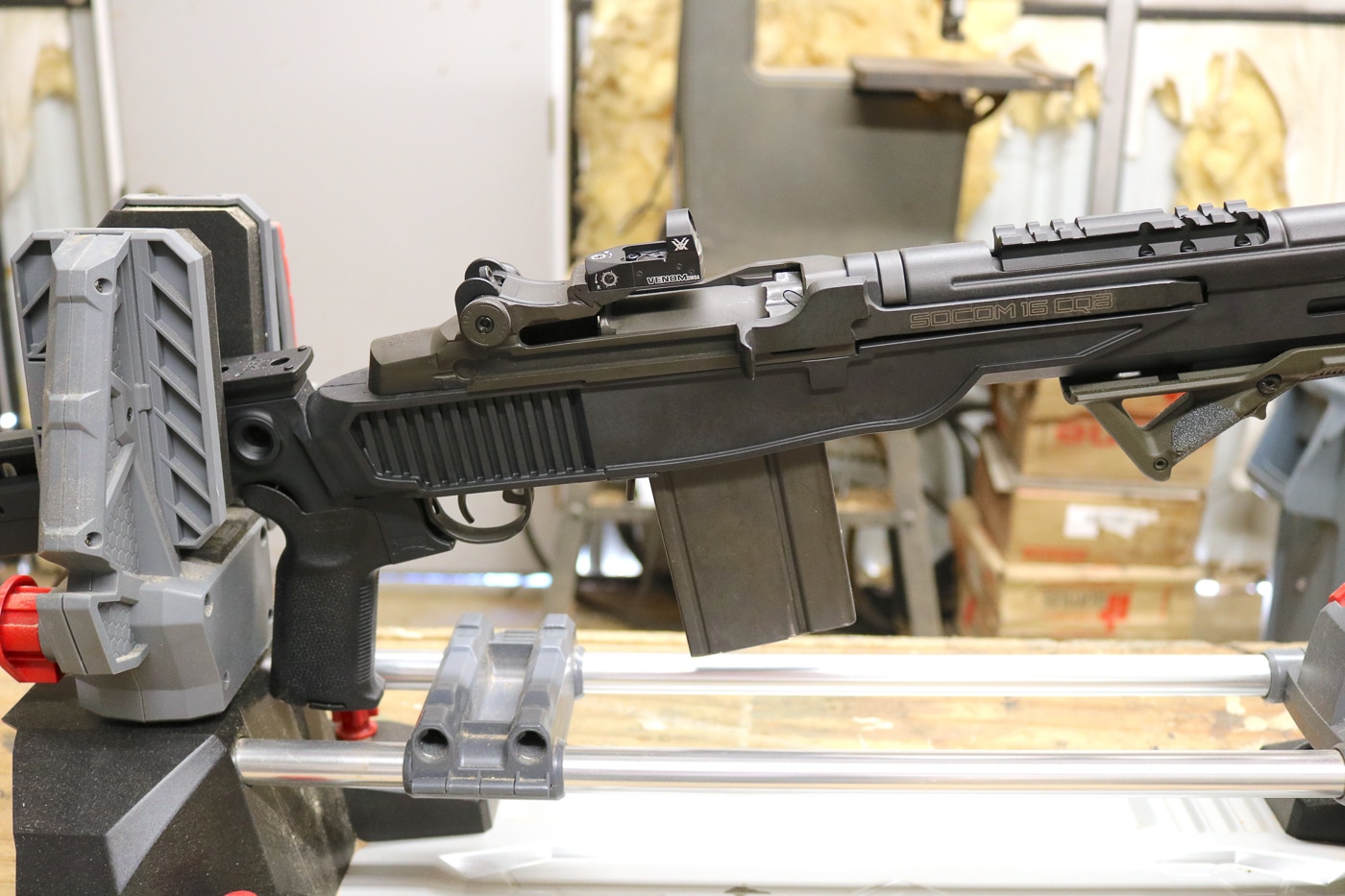
Nylon is used in all kinds of stuff these days. If you live on Planet Earth in the 21st century, your world is covered with a thin patina of nylon. However, in its pure form, nylon really isn’t tough enough to form gun parts. Easy to mold, yes. Indestructible, not so much. That’s where the glass bit comes in.
By adding glass in the form of tiny spheres or fibers, nylon can be made into something much more durable. Glass-filled nylon is markedly stronger, harder and more rigid than the pure nylon matrix. It offers higher creep resistance, better dimensional stability and increased wear characteristics than is the case with base nylon material. Glass-filled nylon also facilitates higher service temperatures. In short, glass-filled nylon is a great material from which to craft gun accessories.
A Good Host
The AR is easily the most customizable firearm on the planet. Springfield Armory’s SAINT line of Stoner-inspired rifles has you covered if that’s your bag. However, sometimes you need a bit more horsepower. If that’s the case, you’ll be wanting some serious .30-caliber punch. Enter the Springfield Armory M1A.
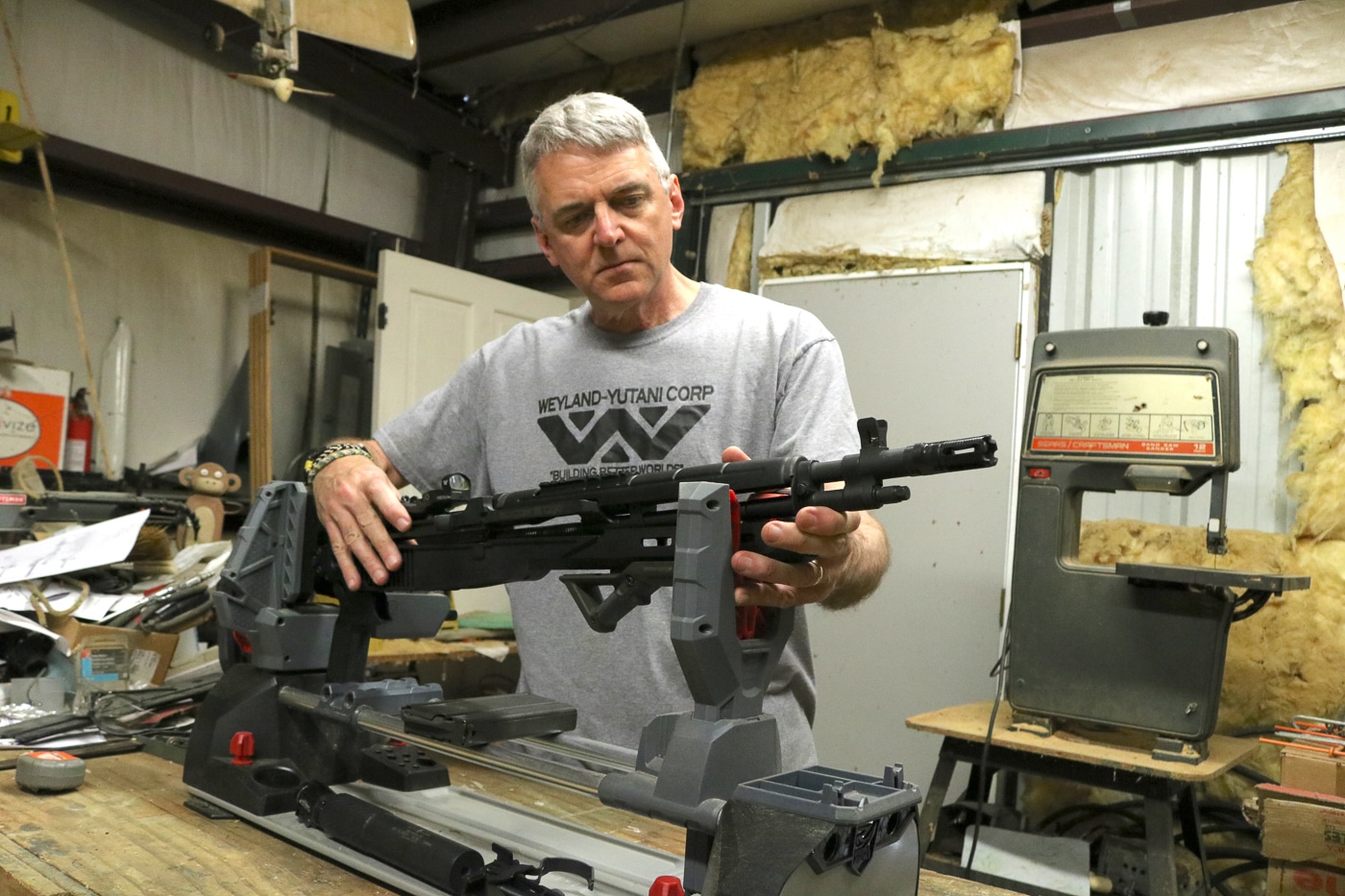
As noted, the M1A is the semi-automatic version of the G.I.-issue M14 service rifle. Adopted in the 1950’s, the M14 was the standard U.S. infantry rifle prior to the adoption of the lighter 5.56mm M16 shortly thereafter. The M14 acted as a bridge between the bulky rifles of WWII and the lightweight carbines of today.
The M14 is, at its heart, a modified, magazine-fed version of the classic M1 Garand. The M1 was the most advanced infantry rifle of the Second World War, and the same basic, proven gas-operated, rotating-bolt action found its way into the M14 minimally unchanged. Unlike the M1, the military’s M14 was selective fire and fed from a detachable 20-round box magazine.
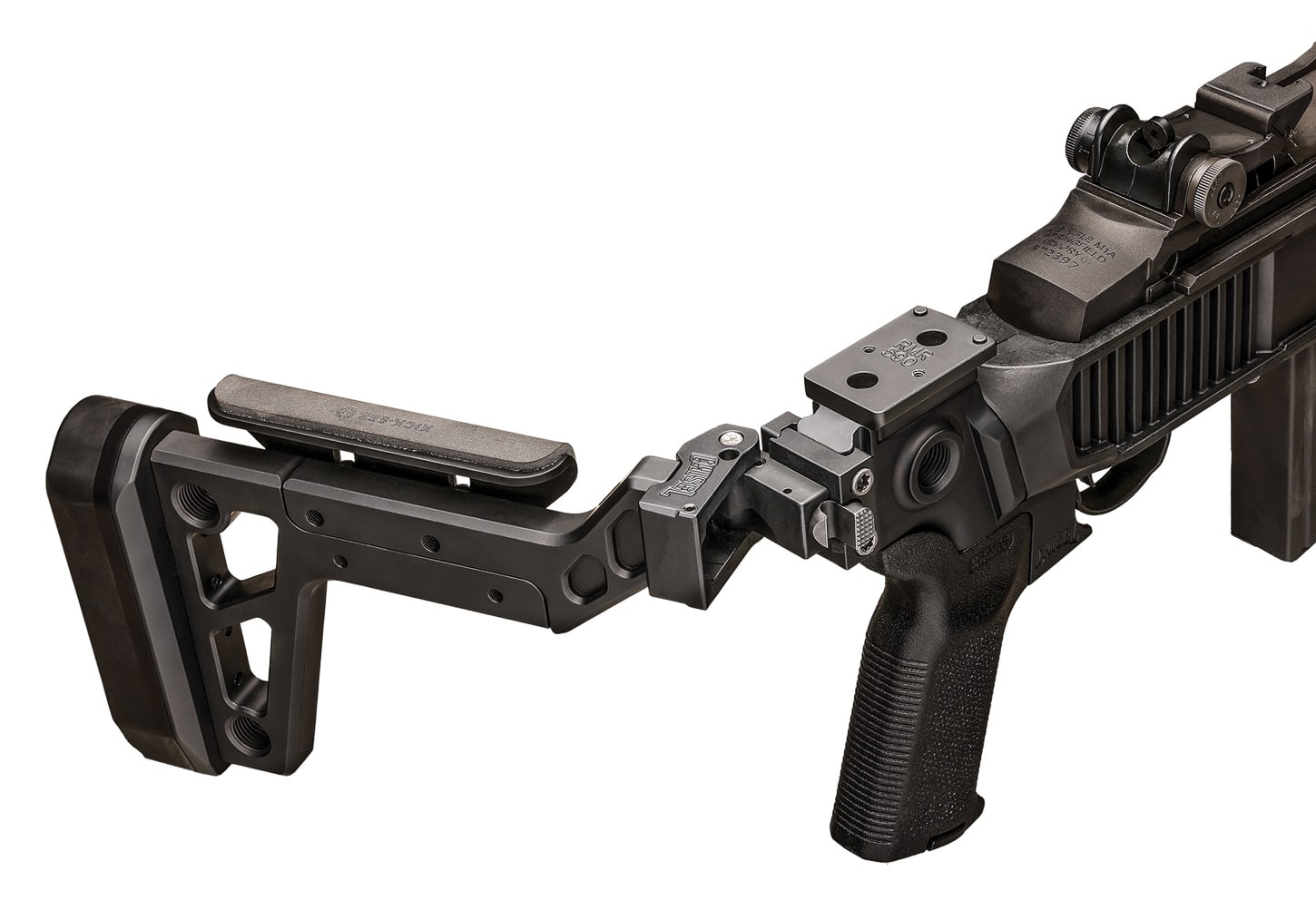
The biggest departure was the M14’s 7.62x51mm cartridge. Half an inch shorter than the .30-06 round fired by the Garand, the 7.62x51mm NATO offered almost the same ballistic performance in a package that was lighter and less bulky. The M14 was designed to prosecute WWIII in Europe. However, given the tight confines of the jungles in Vietnam, it proved a bit bulky.
Nowadays, Springfield Armory offers the venerable M1A action in a variety of different formats. Any of them are compatible with the Delta 14 Chassis Gen 2. The best fit, in my opinion, is obviously the SOCOM-16. Plop that bad boy down into a Delta 14 chassis and you’ve got some seriously portable power.
Hands-On
Admittedly, the M1A is a big, steel gun. It will always be heavier than a comparable aluminum-framed AR. However, with the short SOCOM barrel and Delta 14 Gen 2 system, the resulting smokepole occupies about the same footprint as its smaller sibling.
The charging handle reciprocates with the bolt on the right. This means you could theoretically take a boot to it in the unlikely event it gets sticky. The magazine release is a handy midline thumb lever. Magazines must be rocked in and out in the manner of a Kalashnikov. However, this offers some significant mechanical advantage that allows you to seat a fully loaded magazine with the bolt closed. The midline safety in the triggerguard is easily managed with the index finger of your shooting hand.
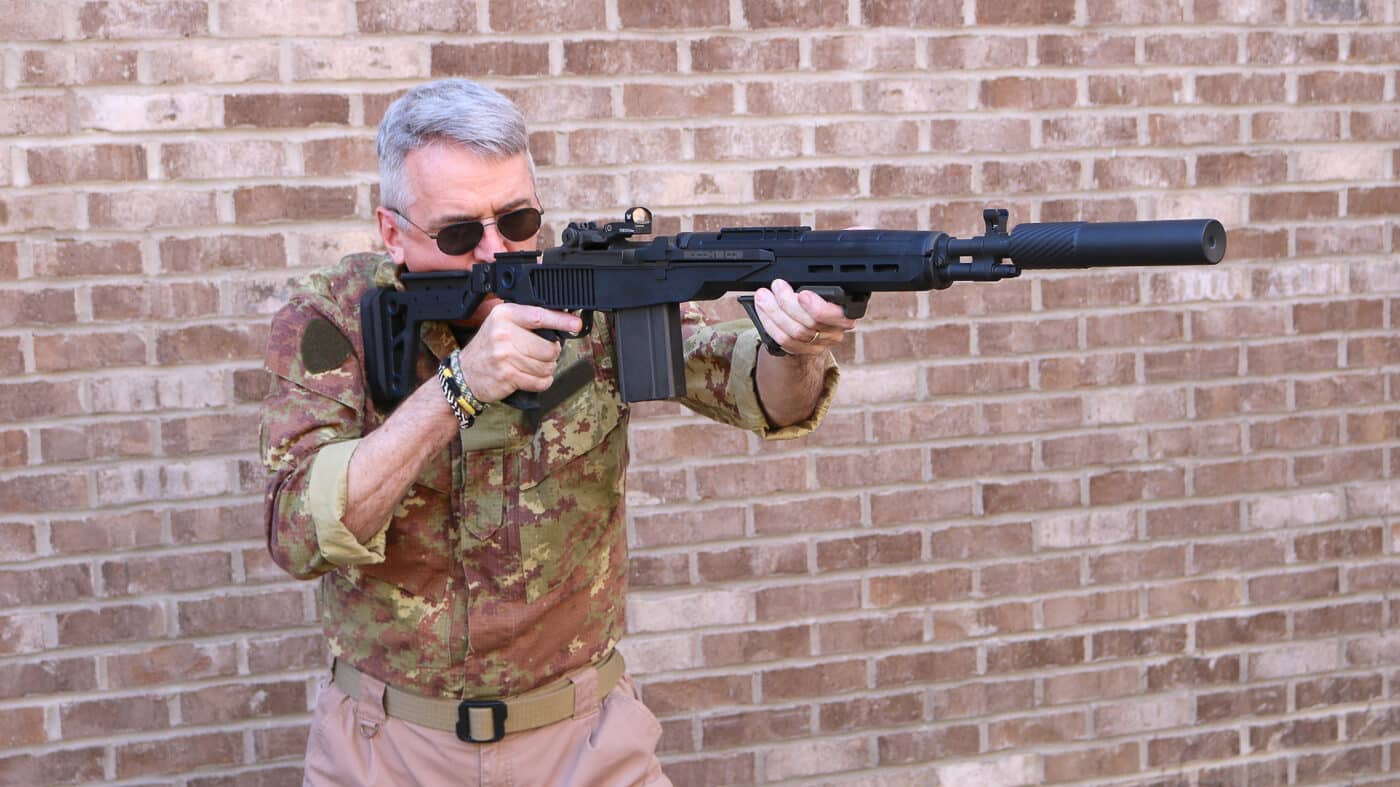
The side-folding system from Chisel Machining on my test model is as rugged as Chuck Norris’ toenails and as versatile as a Swiss Army knife. Cut from aluminum, it is essentially indestructible. It features a KICK-EEZ cheekrest that is adjustable for height, as is the KICK-EEZ recoil pad. It is also festooned with sling mounting points. A swappable AR-pattern Magpul MOE-K2 pistol grip rounds out the package.
Many folders can be flimsy, uncomfortable or both. This example from Chisel Manufacturing is none of that. It perfectly complements the Delta 14 chassis in my opinion.
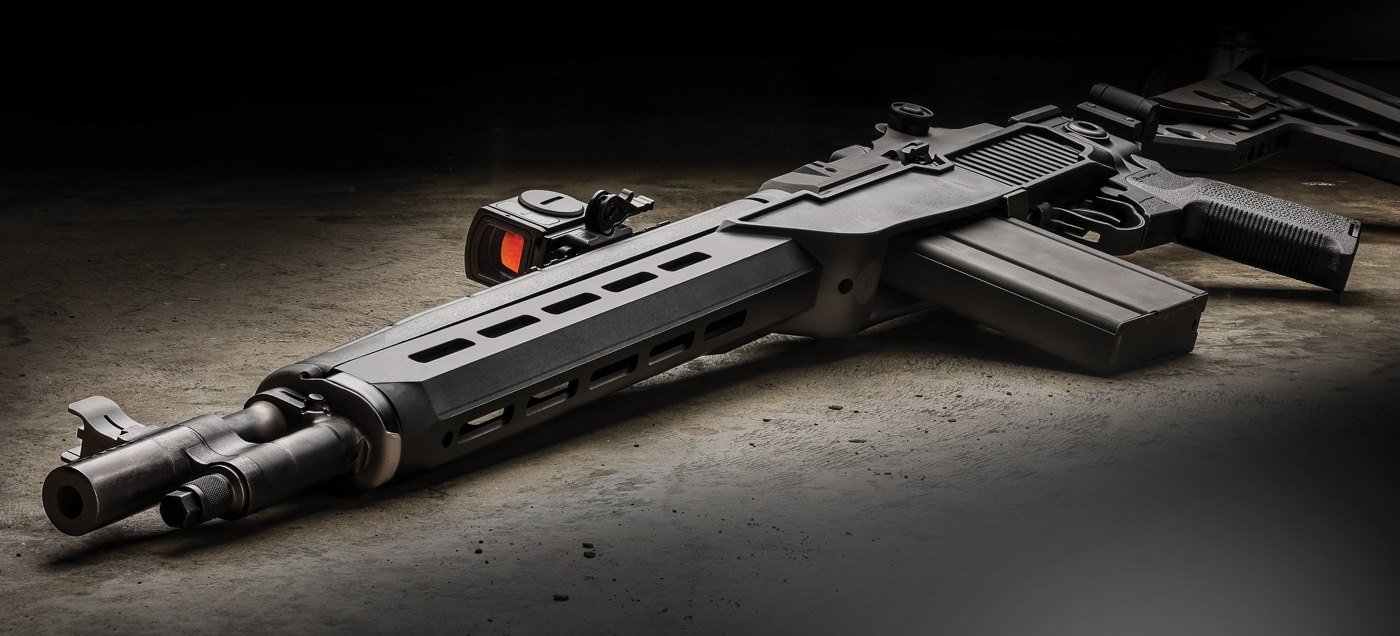
Once mated with the Delta 14 chassis, the M1A SOCOM CQB was rock solid. The gun is a bit front heavy, but that helps manage muzzle rise during rapid fire. The Chisel buttstock readily adjusted to fit my particular anatomy for a reliable cheekweld. Also, the generous buttpad helped mitigate felt recoil.
On that subject, recoil is real without being onerous. This is a manly rifle firing a manly cartridge. You’ll know you’re shooting it. However, the experience is not particularly unpleasant thanks to the gun’s exceptional ergonomics and the assembly’s efficient design. Downrange performance reflects that of the host rifle, which is superb. The Delta 14 chassis helps you wring every bit of horsepower, precision, and range out of the already-superlative SOCOM CQB.
Ruminations
Nowadays we customize our clothing, our cars, our electronic wallpaper and our smartphones. The Delta 14 chassis lets us customize our M1A rifles as well. Featuring superlative human engineering and cutting-edge materials science, the addition of the Delta 14 Gen 2 chassis takes your M1A rifle to some exciting new spaces. Installation is easy, and the end result is both compact and powerful.
The M1A rifle is a brilliant survival, hunting and recreational tool right out of the box. However, dropping the action into a Delta 14 chassis makes it smaller, lighter and even more versatile. MSRP for the basic chassis is only $199.99. The chassis as-tested with the Chisel Machining assembly is priced at $579.99.
I was also informed by Bill that the company offers a no-questions-asked discount for any military and LE customers. The 10% discount code — MIL10 — can be applied at checkout, and Bill says that there is no DD-214 or department letter needed.
The Delta 14 Gen 2 chassis makes these great guns even greater.
Editor’s Note: Be sure to check out The Armory Life Forum, where you can comment about our daily articles, as well as just talk guns and gear. Click the “Go To Forum Thread” link below to jump in!
Read the full article here

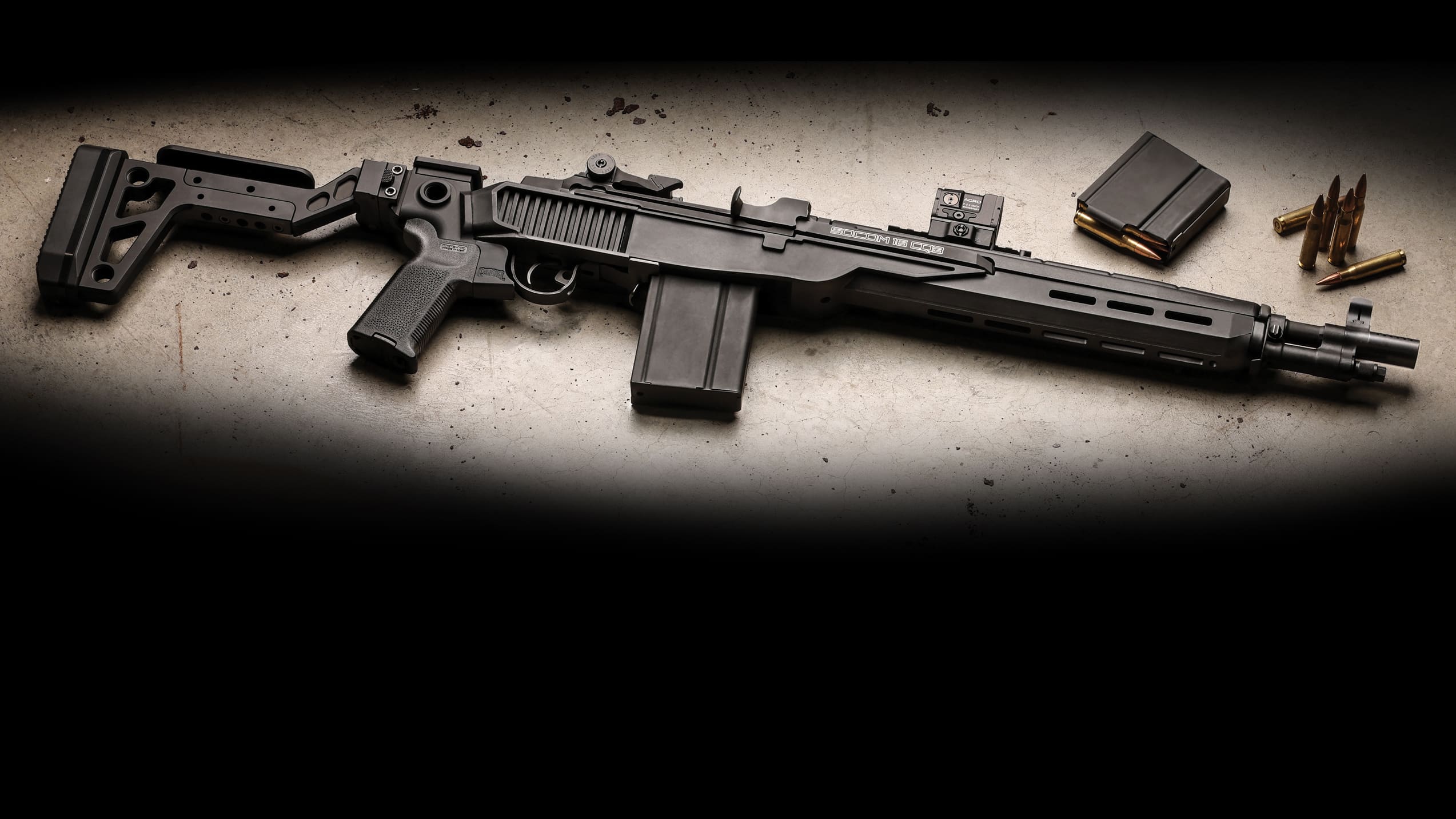


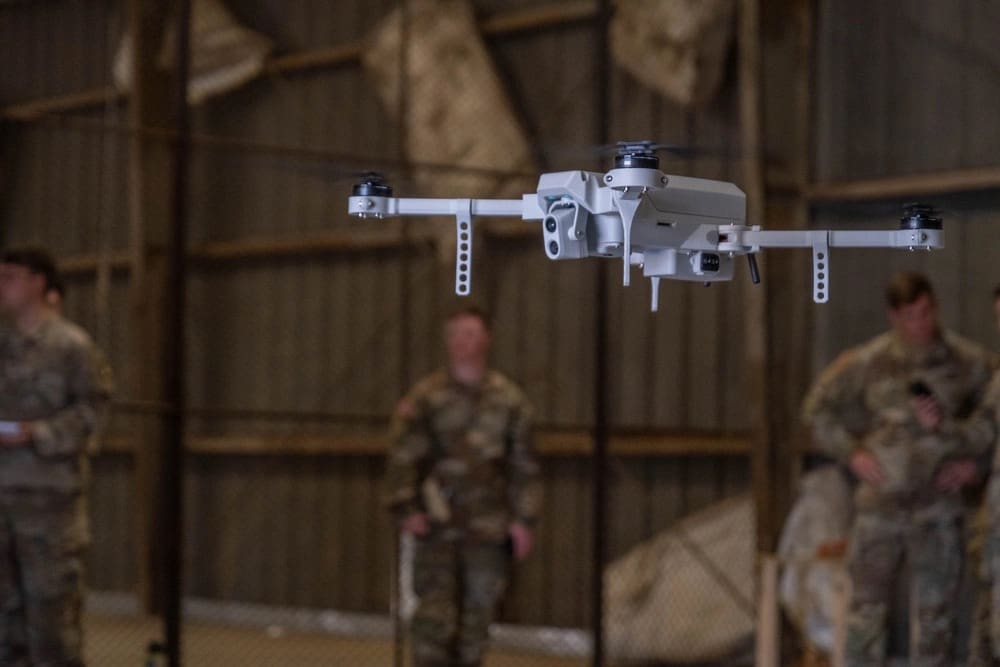
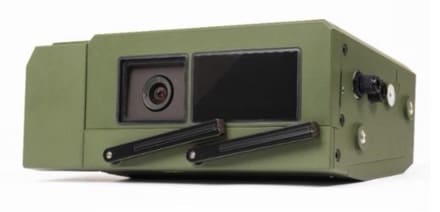

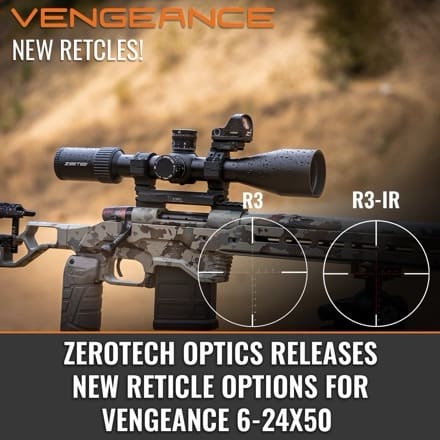
Leave a Reply